This is a piece from Lilliput Magazine, 1946. I loved the photos and the history that goes with them. The photographs are by Bill Brandt.
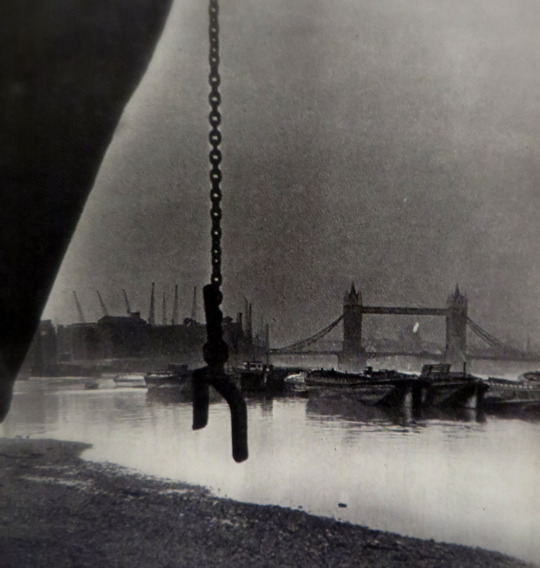
Below Tower Bridge: St Pauls Seen From Bermondsey.
As ships steam up the Thames towards Kings Reach, Tower Bridge looms up ahead of them.Off Shadwell, a mile below, they signal Cherry Garden Pier at Southwark; Cherry Garden telephones to the bridge master, and the great bascules rise to admit them to the heart of London. Above, the traffic waits, but only for ninety seconds: the bridge begins to close before the ships stern is clear. Tower Bridge was built in 1894 at a cost of one and a half million pounds. Beyond the bridge is the dome of St Pauls.
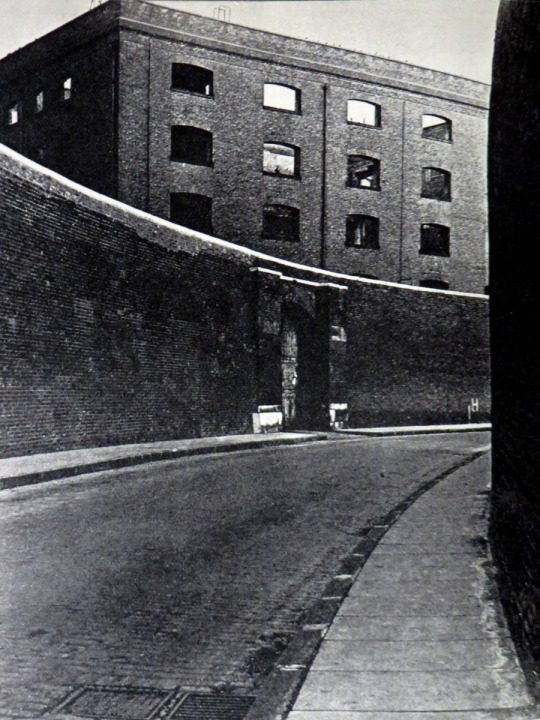
As I Was A-Walking Down Nightingale Lane…
Nightingale Lane would send any rustic bird flying in terror for its life. A brutally uncompromising dockyard street, it wanders grimly between the Customs walls of St. Katharines and London Docks down to Wapplng High Street. But in the 17th century it was a simple country lane. It is recorded that Charles I hunted a stag from Wanstead and that the hill was made in a garden in this lane, to the detriment of the herbs in the garden. The name is actually derived from the knights whom Edgar I allowed to form a guild here it was first called Cnihten, and then Knighten, Guild.
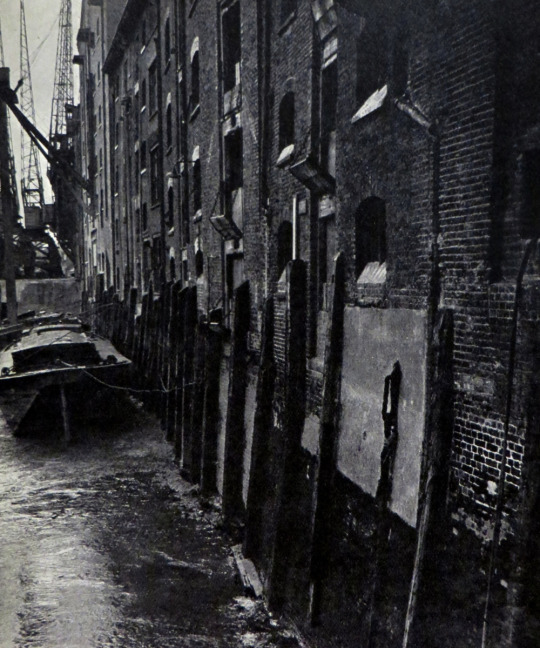
Wareshouses Along The South Bank.
Londons merchant princes may dress in black striped trousers and call themselves limited companies,but the goods they import are more rich and strange than any ever seen in Baghdad. Behind the walls of these drab warehouses lie spices and precious metals; tusks of ivory, furs, and casks of wine. The very grimness of the port is attractive to the visitor. If William Dunbar could return from the 15th century; he might well write again:
“Of merchants full of substance and of might, London, thou art the flower of cities all.”
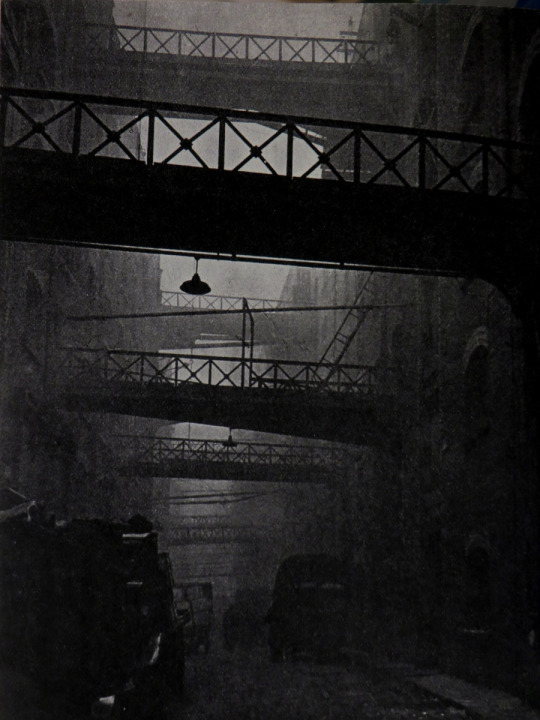
Shad Thames.
Along the river from St. Saviours Back to Tower Bridge winds a street which, with its bewildering mass of gantries and cranes, and its highly compressed activity, is typical of much of the Thames-side London which has been building up slowly from the time of Drake. Before our great Elizabethan sailors opened the ocean highways, there was a mere trickle of foreign shipping in the Thamesa trickle that was to swell to the greatest flood of shipping in the world. Shad is another name for herring, and as Shad Thames is a continuation of Pickle Herring Street, the name is perhaps not so,obscure as it first appears.

Hermitage Stairs, Wapping.
It is no longer thought that the Romans built the first river wall, but it was already old when it collapsed in 1324 and the river streamed through to flood 100,000 acres of the land now occupied by the London and the St. Katharines docks. After the breach had been repaired people were encouraged to return to Wapping wall and settle, so that there might be someone with a personal interest in keeping the wall in repair. It was around this time that the hermitage is thought to have existed which gave Hermitage Lane its name. Waterman call the river here not the Thames, but the London river.
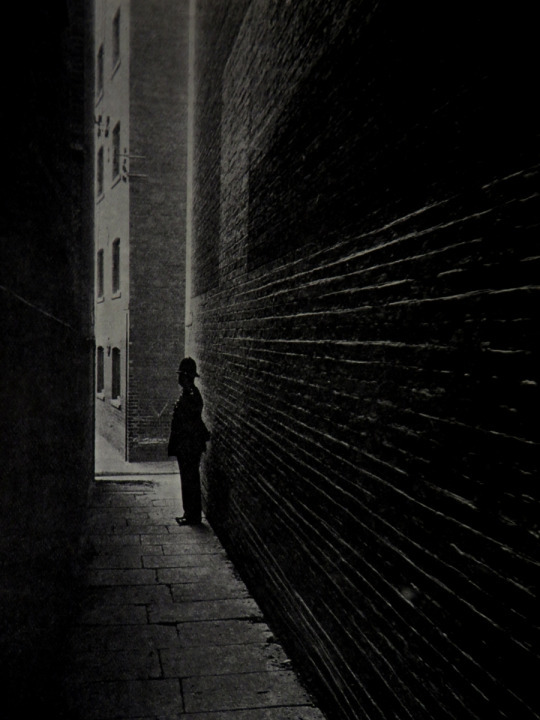
Horselydown New Stairs, Bermondsey.
The palace, the monastery, and the Abbey that were in their turn the pride of Bermondsey are to-day not even memories. Just below the bridge on the Bermondsey side of the river, Horselydown Lane runs down to the water overground where formerly the houses of great nobles and prelates stood. Here also were the parish archery butts, set up in the reign of Henry VIII. The warehouses lining the dark alleys are not very old, but they have stood long enough to seem immutable, and to provide a dark challenge to town planners.
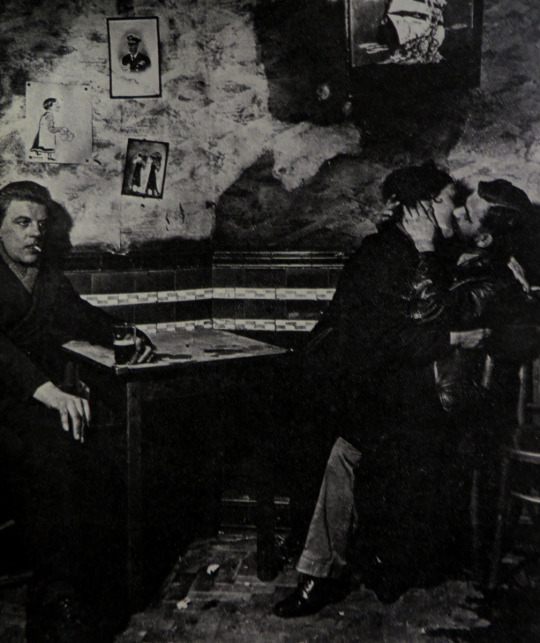
Charles Browns, Limehouse.
Many of the old East End pubs have a rich historical background, real or synthetic,of piracy, smuggling, and general villainy. Charley Browns is the most famous of the old seafaring taverns, and still the first port of call for most sightseers in the East End. Sailors front all over the world used to bring their trophies to Charley, until the King of Limehouse, as he came to be called, had filled his pub with curios. When Charley died in 1932 ten thousand mourners followed his coffin: The pub is still a sailors, as well as a tourists,house.

Wapping The Wharves.
Today Wapping is less exciting, and much more respectable, than it ever was in the past, when Ratcliffe Highway was the home of the land-shark and the downfall of the sailor. The Carron Wharf, on the right, belongs to a company which in the 18th century invented the carronade, a piece of ordnance which their ships mounted by Government licence. To prevent being mistaken for privateers these ships also carried the likeness of a cannon ball on their masts. This is the view across the river from St. Saviour’s Dock.